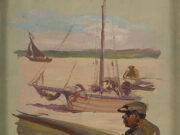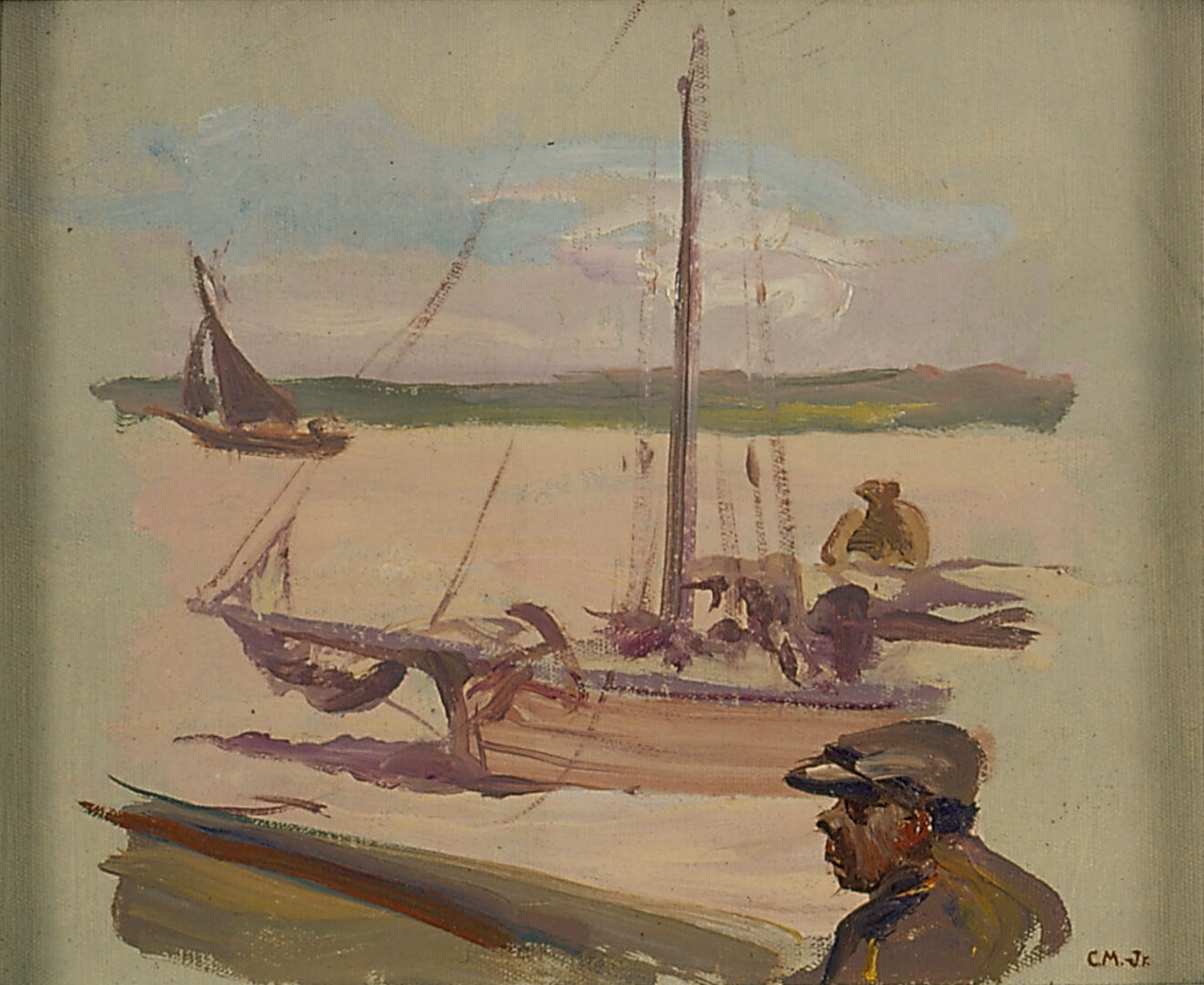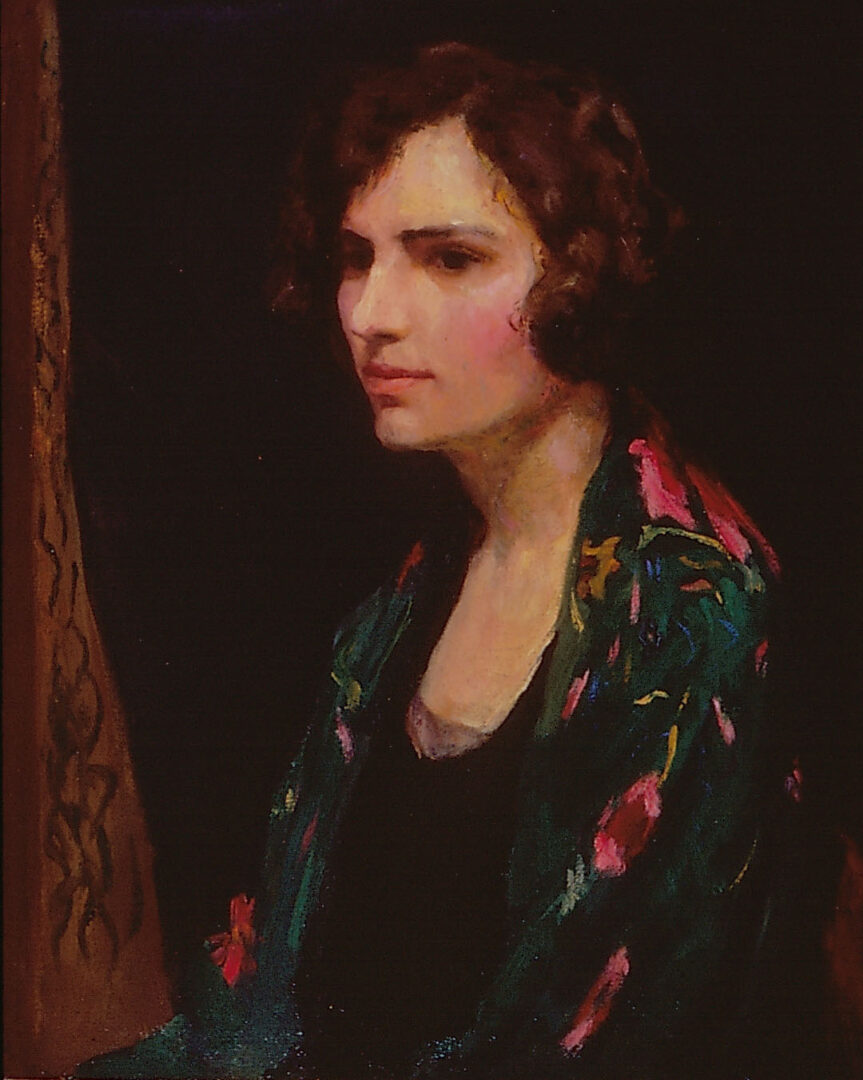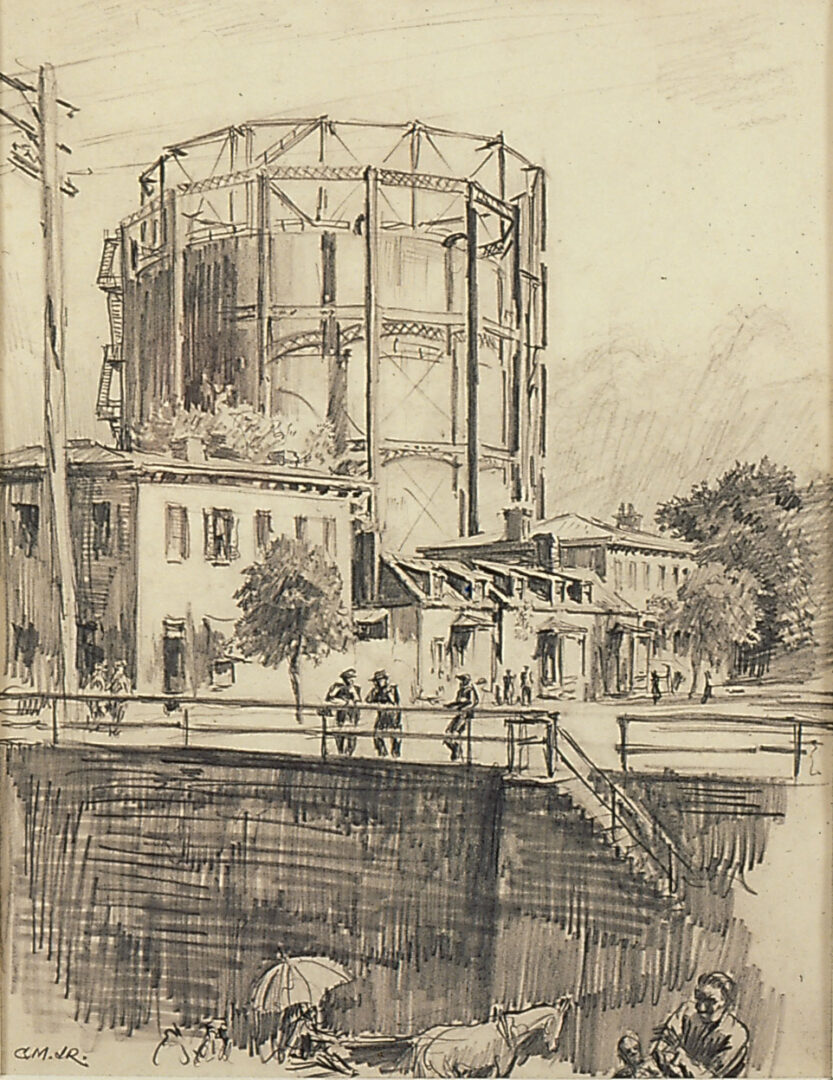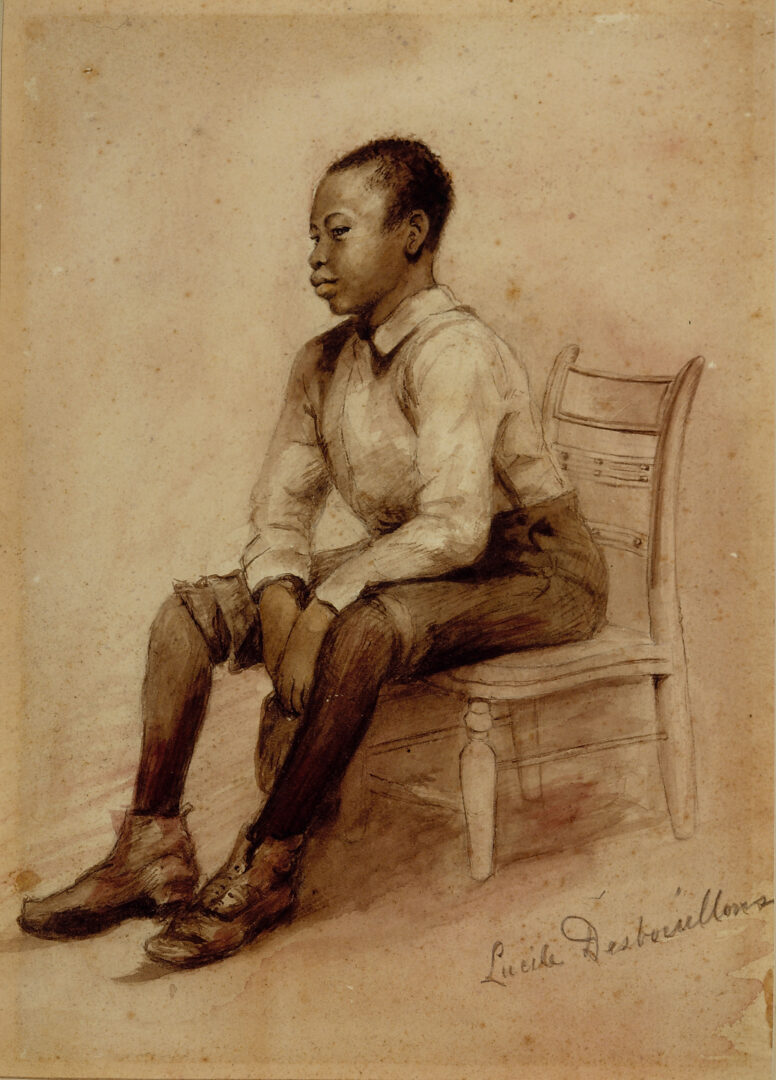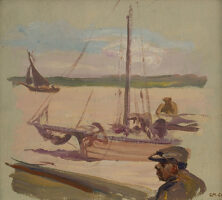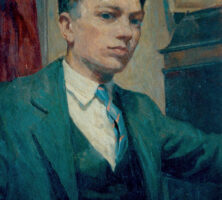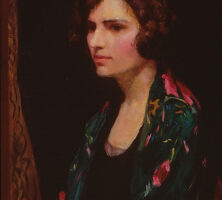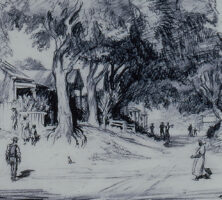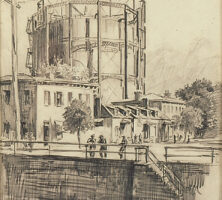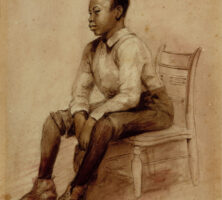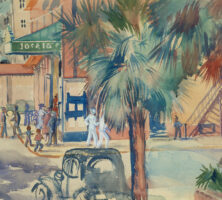Christopher Murphy Jr. was a prominent artist, teacher, and arts advocate in Savannah for much of the twentieth century. Best known for his etchings of Savannah and the surrounding area, he was equally adept at portraiture.
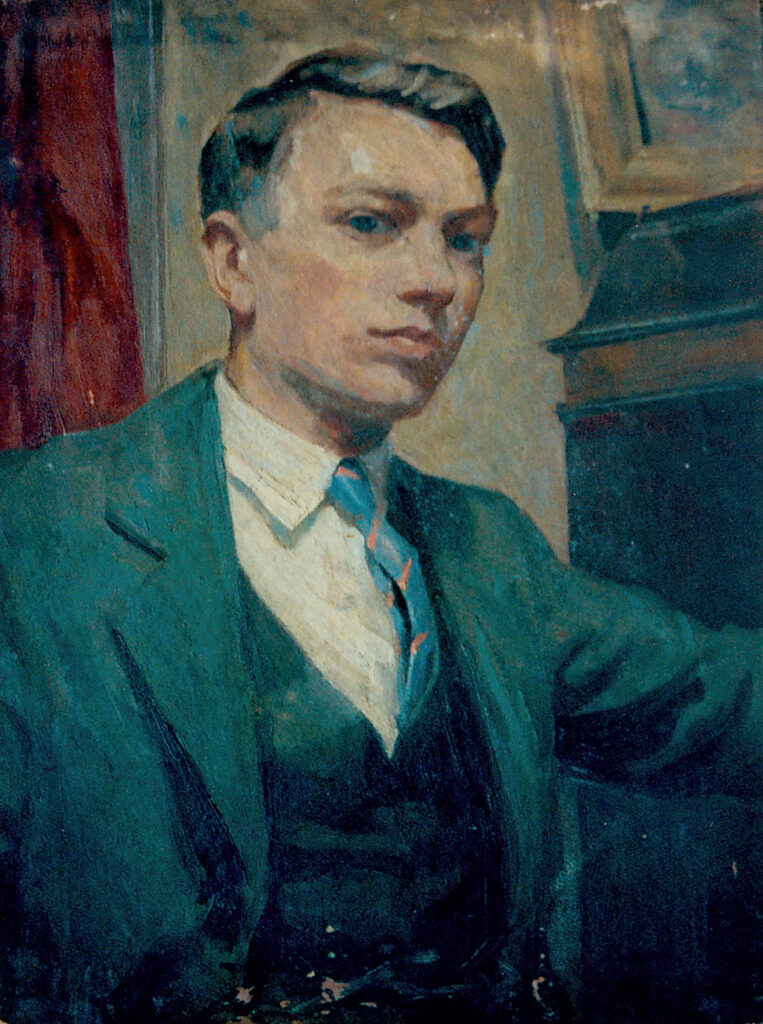
Courtesy of Morris Museum of Art
Christopher Aristide Desbouillons Murphy Jr. was born in Savannah on December 28, 1902, to Lucile Desbouillons and Christopher Patrick Hussey Murphy, both well-known artists in Savannah. The oldest of their seven children, he was known as Christopher Murphy Jr. His middle names differed from his father’s and were bestowed upon him in tribute to his maternal grandfather. Murphy’s sister Margaret also chose art as her vocation.
Art was a constant presence in the Murphy home at 11 East Perry Street. Reference books and art materials were in abundant supply for Murphy’s use, and he began to study art seriously at the age of ten. He received his initial art instruction from his parents and was also influenced by Hardesty Gilmore Maratta, a visiting artist and inventor of the Maratta theory of color, which advocates the use of harmonizing colors in an innovative way. Murphy graduated in 1921 from the Benedictine Military School, a local Roman Catholic school for boys.
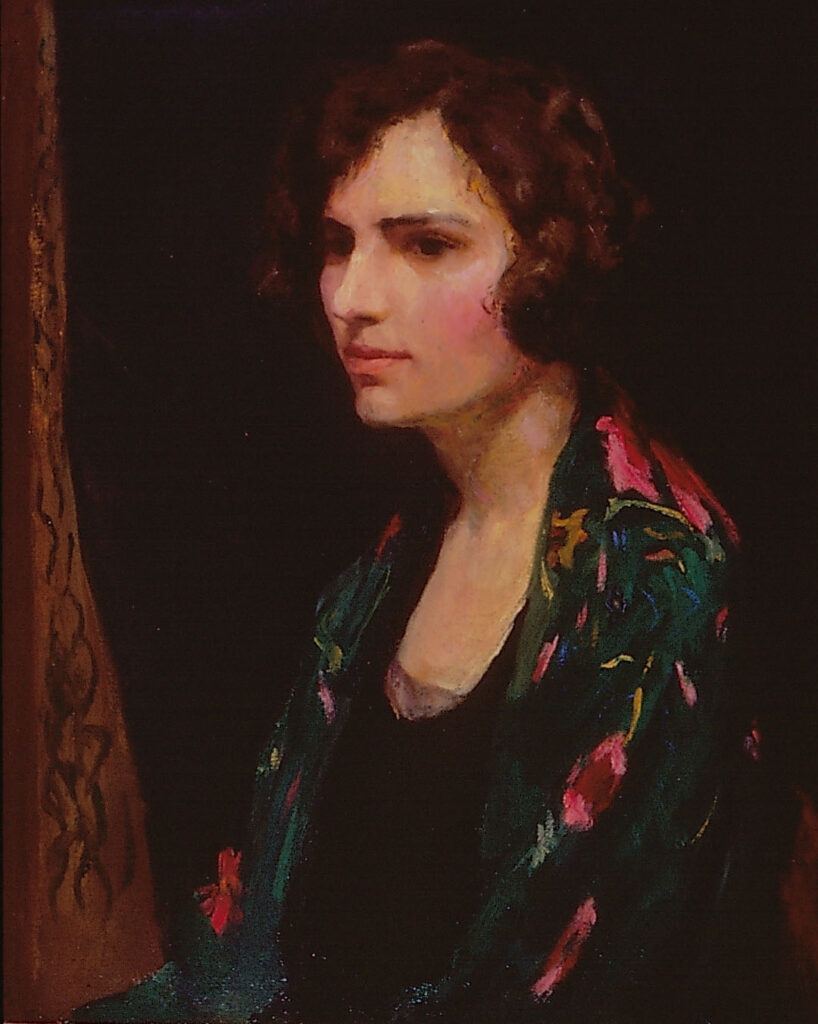
Courtesy of Morris Museum of Art
Murphy attended the Art Students League in New York City off and on from 1921 until 1923, and again in 1925 and 1930. During his time there he studied life drawing with George Bridgman, painting and composition with F. V. DuMond, portraiture with Henry R. Rittenberg, and etching with Joseph Pennell. Murphy was also intensely interested in architecture, and in 1922 he studied design with the architect Lloyd Warren, who was the director of the Beaux-Arts Institute of Design in New York City. In 1925 he was awarded a Louis Comfort Tiffany Foundation Fellowship.
During the 1920s Murphy divided his time between Savannah and New York. He took classes offered by the Savannah Art Club at the Telfair Academy of Arts and Sciences (later Telfair Museums) in Savannah with local artist Hilda Belcher and visiting artists Adolphe Blondheim, William Chadwick, and Eliot Clark. His etchings and portraits won awards, and his work was widely exhibited, appearing at the Victoria and Albert Museum in London, England; the National Academy of Design, the Brooklyn Society of Etchers, and the New York Water Color Club, all in New York; the Art Institute of Chicago in Chicago, Illinois; the Sesquicentennial Exposition in Philadelphia, Pennsylvania; and a solo exhibition in New Jersey. His work was also included in traveling exhibitions of the Southern States Art League and the American Watercolor Society.
Murphy liked to sketch outdoors. Captivated with Savannah’s distinctive architecture and familiar with its numerous landmarks, he systematically captured the ebb and flow of daily life in the streets and on the waterfront from 1925 until his death. Acutely aware of changes brought about by both progress and neglect, Murphy visited deserted historic plantations with crumbling outbuildings and wandered into rural areas outside the city, drawing what he saw. With these numerous drawings as sources, Murphy created more than 250 etchings and drypoints. These works fit firmly within the etching revival traditions of the late nineteenth and early twentieth centuries, an aesthetic well developed in the prints of James Abbott McNeill Whistler and Joseph Pennell, Murphy’s teacher.
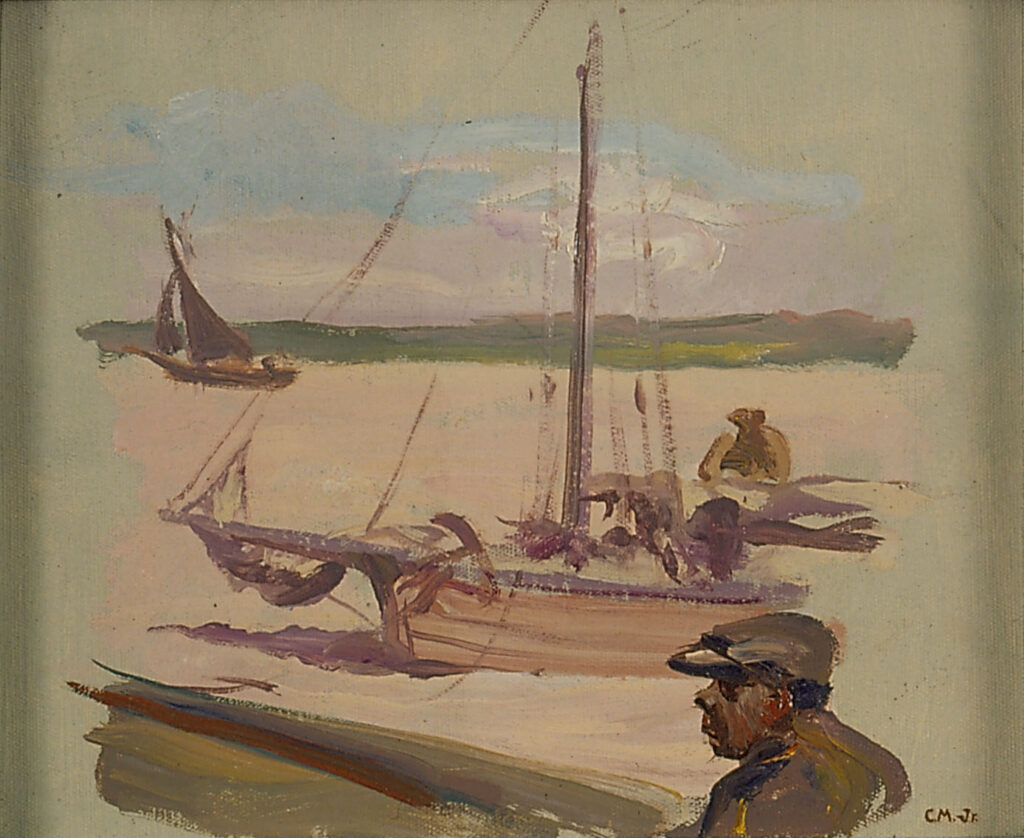
Courtesy of Morris Museum of Art
On May 29, 1929, nineteen locally prominent artists gathered in the Murphy family home and established the Association of Georgia Artists. The new organization had ambitious goals: to encourage art appreciation in Georgia, to mount annual exhibitions of members’ works that would travel throughout the state, and to enable artists to become better acquainted with one another. Within ten years the membership roster swelled to nearly 100. Murphy served as the organization’s president from 1934 to 1935.
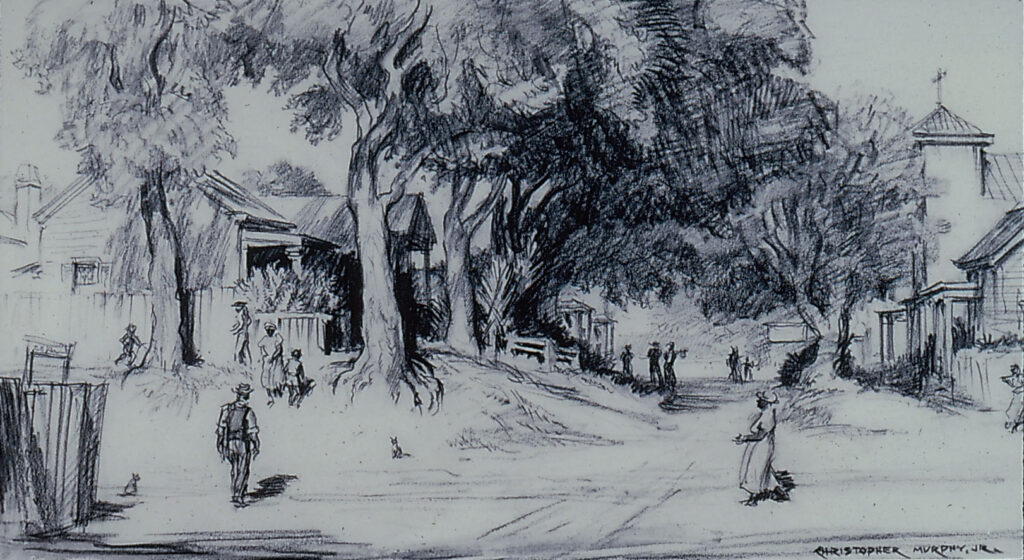
Courtesy of Morris Museum of Art
Murphy was also an active member and president of the Savannah Art Club, the oldest art club in Georgia. Established to encourage art appreciation in the citizenry of Savannah and further art as part of the community’s cultural life, the Savannah Art Club also managed the Telfair Academy of Arts and Sciences.
In the following decades Murphy directed his career from Savannah. He maintained a rigorous exhibition schedule, which included showing his work in Georgia at the High Museum of Art in Atlanta, the Savannah Art Club, and the Telfair Academy of Arts and Sciences; in New York at the 1939 New York World’s Fair, the Print Club of Rochester, and the Whitney Museum of American Art; in Ohio at the Cleveland Print Club; and in Pennsylvania at the Philadelphia Print Club. At various times he taught classes in Savannah at Armstrong State College (later Armstrong State University), Hunter Air Force Base Service Club, the Savannah Area Vocational-Technical School (later Savannah Technical College), and the Telfair Academy of Arts and Sciences. He also accepted a limited number of portrait commissions and contributed illustrations and articles to several magazines, including American Architect, Country Life, House Beautiful, and Southern Architect.
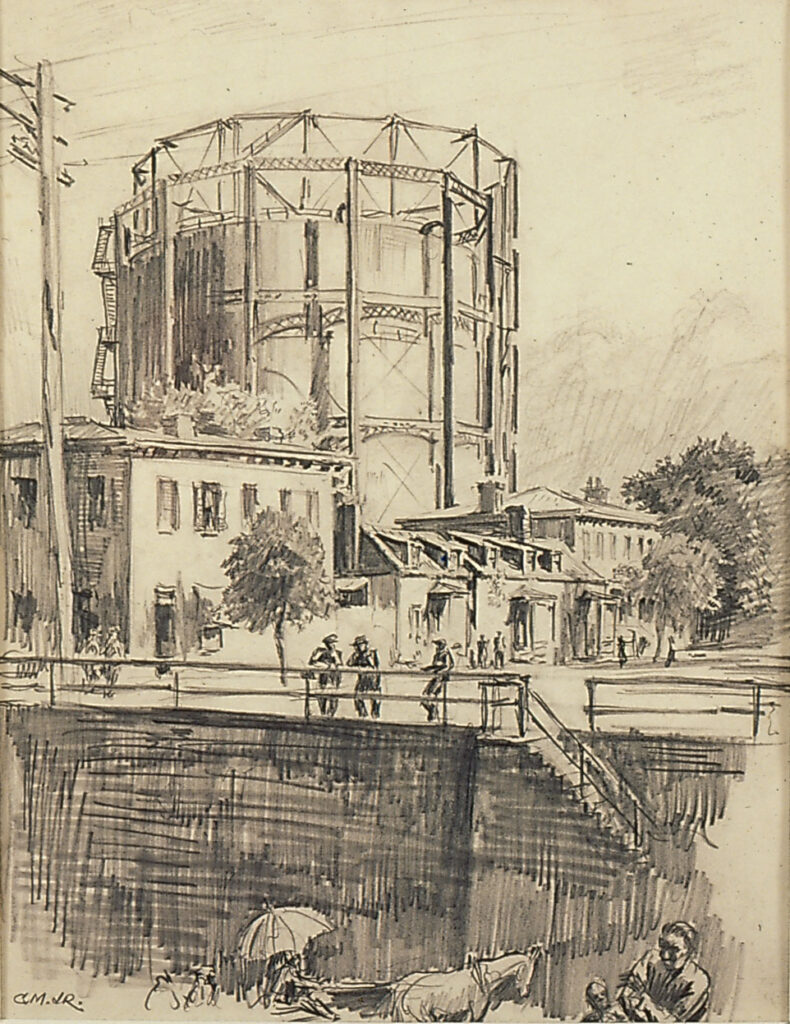
Courtesy of Morris Museum of Art
Murphy married Ernestine Cole in 1946; their only child, Christopher Cole Murphy, was born three years later. In 1947 he produced thirty-seven illustrations for the book Savannah, a collaboration between Murphy and local historian Walter Charlton Hartridge. The book was well received and helped initiate massive restoration efforts in historic downtown Savannah.
Murphy died on October 20, 1973, and is buried at Hillcrest Cemetery in Savannah. The collection of the Morris Museum of Art in Augusta includes 100 pieces of his work; the Telfair Museum of Art also houses his work.


